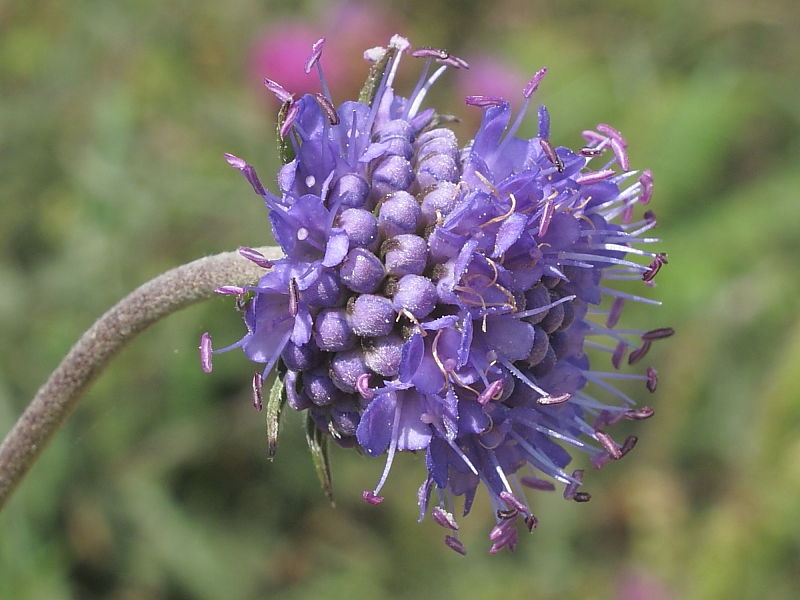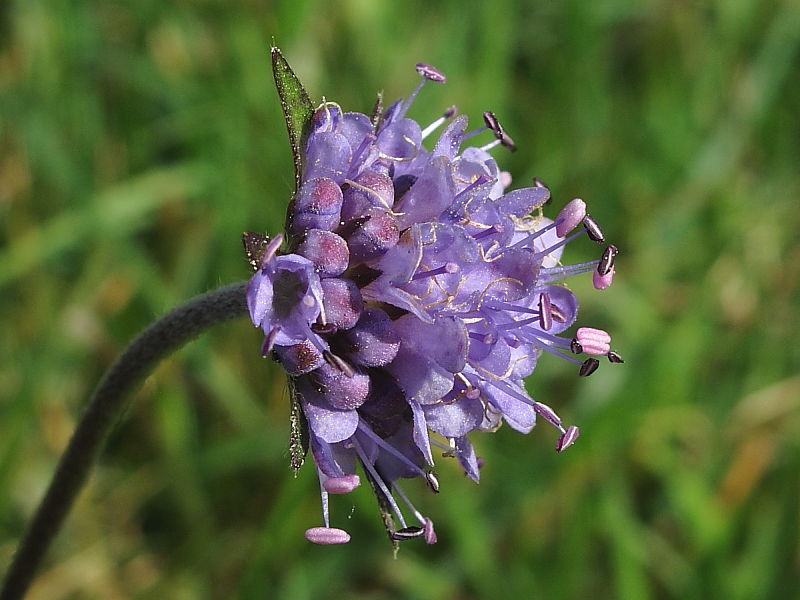Description of Devil’s-bit Scabious (Succisa pratensis)
Flowering from June to October, Devil’s-bit Scabious is a perennial, native wild flower found throughout the British Isles.
It’s a member of the Teasel family (Dipsacaceae) along with Field Scabious (Knautia arvensis) and Wild Teasel (Dipsacus fullonum).
It likes various habitats including wet grasslands, meadows and damp woodland on mildly acid soils as well as chalk and limestone grassland.
Flowers
The flowers can be mauve to a deep bluish purple in flowerheads 1.5-2.5cm across.
Each floret is more or less of equal size (unlike the Field Scabious (Knautia arvensis)).
The corollas have 4 equal lobes and the stamens are long-protruding.
The calyx (the whorl of sepals below an individual flower) is cup-shaped with 5 bristle-teeth.
The bracts amongst the florets are leafy and longer than the calyx teeth.
Stems
The plant has erect, branched stems up to 100cm although in exposed settings the plants can be very low to the ground and look very different.
The stems are a little hairy.
Leaves
The basal leaves of Devil’s-bit Scabious are ovate-lanceolate.
The few stem leaves are opposite, short-stalked, entire or sparsley toothed and narrower than the basal leaves.
The key difference from Field Scabious (Knautia arvensis) is the leaves are undivided.
Devil’s-bit Scabious as a Source of Nectar
Amongst the butterflies and moths that visit Devil’s-bit Scabious for its nectar is the Painted Lady butterfly, shown here nectaring at Rosemullion Head in Cornwall in late summer.
Devil’s-bit Scabious as a Caterpillar Foodplant
It’s an important larval foodplant for the Marsh Fritillary (Euphydryas aurinia) butterfly and nationally scarce Narrow-bordered Bee Hawk-moth (Hemaris tityus).
Similar wild flowers to Devil’s-bit Scabious
It can be confused with Sheep’s-bit (Jasione montana) and the much scarcer Round-headed Rampion (Phyteuma tenerum) but they’re both members of the Bellflower family (Campanulaceae). The thing to look for in this instance to confirm Scabious is that the leaves are opposite.
The wild flower gallery has images of other wild flowers in Britain shown by family.

